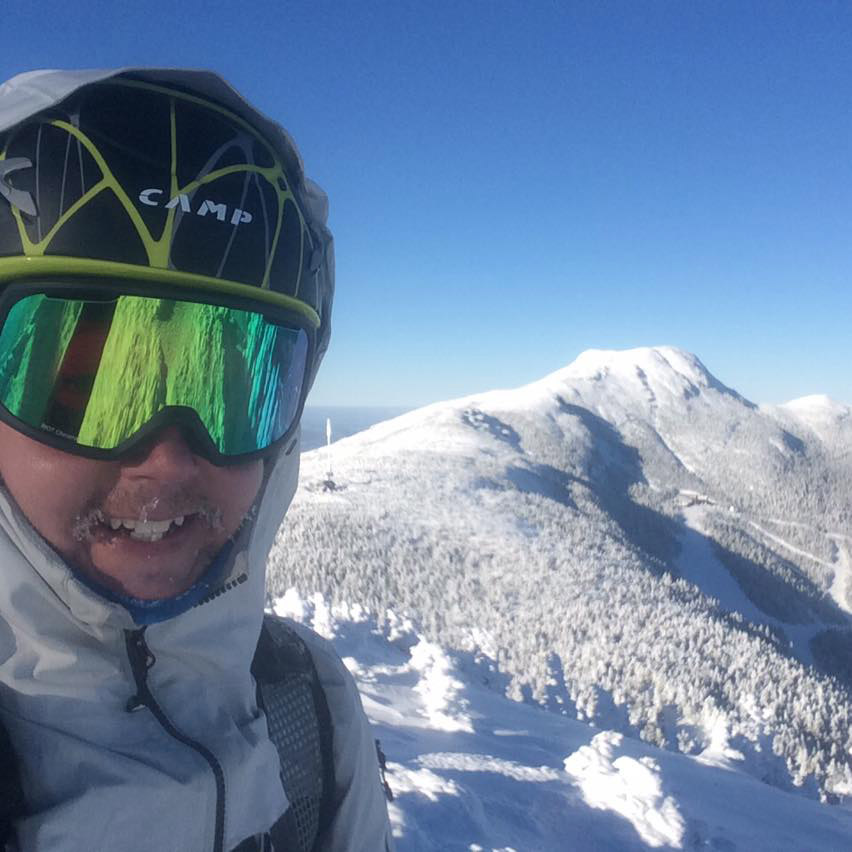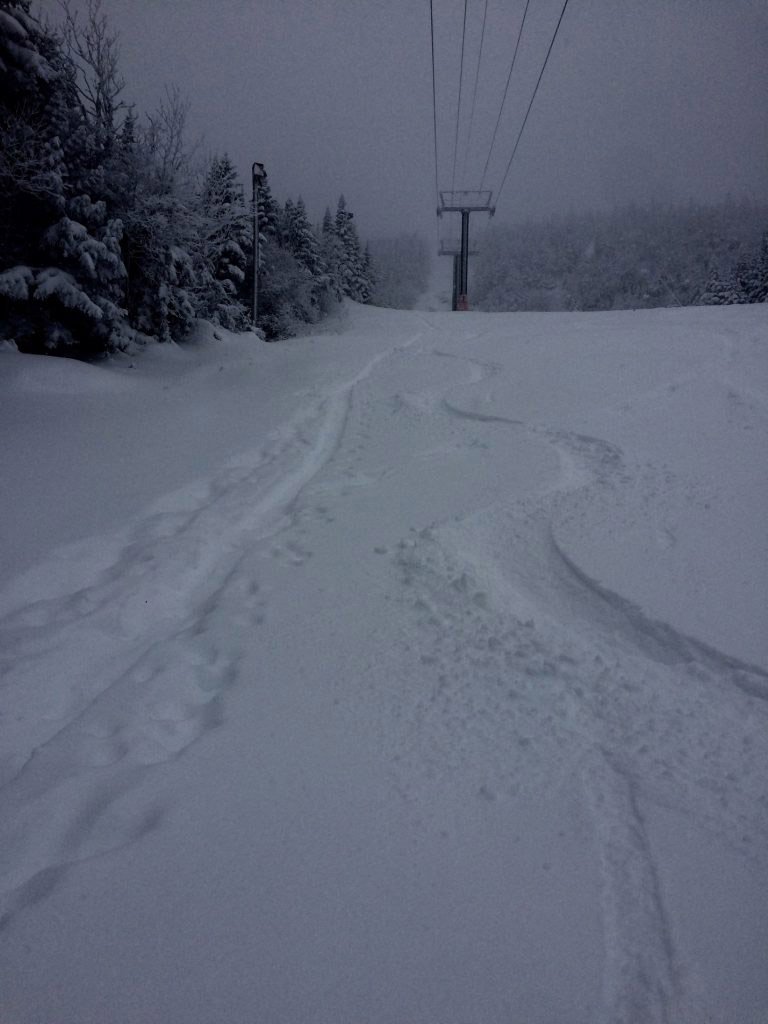Offseason Adventures in Building Fitness
Winter can be depressing for many endurance athletes, including runners. It can often mean more time on the “dreadmill”, the indoor trainer and/or bundled up for slippery runs. I’m not going to lie I spent many years doing that- hours upon hours on the trainer in the winter, running on the dreadmill several times a week when conditions were nasty outside. However too much of this indoor training over time can eventually burn you out. If it hasn’t happened already consider yourself lucky. If you live in an area that sees a fair amount of snow there are other options you can build in to supplement your base training that will not only offset the boredom factor of indoor training and be a lot more fun, but also can build significant fitness!

Wherever possible I try to build adventure into my own training and the athletes I coach. With my athletes this typically happens the most in the winter base period because once the more specific phases of training set in you just have to get the sport specific work done if you want to reach your goals – there’s no shortcuts! But what if there were things you can do in the winter that would supplement and maybe even build aerobic fitness AND were super fun? There’s so many options now. Fat biking, cross country skiing, snowshoeing, alpine touring skiing and skimo, and split boarding. I’m going to touch on these a bit then focus mostly on alpine touring because I am biased and it’s the most fun and most conducive for muscular endurance.
First off you should know that as an athlete and a coach I am HUGE on muscular endurance. Anyone who I coach knows this and has heard me repeatedly speak about protecting your muscle mass by keeping your body in an anabolic environment as much as possible– especially for the masters athletes out there. Ultrarunning is a strength endurance sport and your success in ultras will hinge on your ability to run strong in the later miles (having muscular endurance). In its purest form, you can build muscular endurance by running up a steep hill, or swimming with big paddles, or biking at high muscle tension, low cadence. Now you know where I am operating from. Everything I do in my own training and with my athletes involves a consistent dose of workouts that stimulate muscular endurance.
Now for the good part- each of those winter sports listed above are great for building muscular endurance. So, pick your poison. If you are not a skier or snowboarder how about fat biking or snowshoeing? And keep in mind both of those have options for racing if you are looking to further test yourself. Cross country (xc) skiing is an excellent option for building fitness- Western States champions Steph Violett, Nikki Kimball and Scott Jurek all came from a xc ski racing background and rely on that for cross training in the winter. I spent many years xc skiing before learning about alpine touring (AT) gear. Alpine skiing was my first sport and I grew up doing it here in Vermont so when I first discovered AT gear I had to try it! It’s the ultimate combo of aerobic training and downhill skiing – especially if you like finding powder stashes before anyone else finds them. If you are an alpine skier then hands down your best bet is to try AT skiing which is essentially skiing uphill on skis with climbing skins for grip then transitioning to downhill skiing at the top. This allows you to ski anywhere (resort, side country, backcountry). The current AT ski gear is very impressive with how well it can get you uphill and how great it skis down (depending on your setup – can be as well as on regular alpine gear). The gear has an uphill mode and a downhill mode. When going uphill your boots have a big range of motion and your heels are free like xc skiing so you can stride up the hill. At the top you switch your boots into downhill mode and lock your heel into the binding, so you can make regular alpine turns just like you always have. As mentioned, people do AT skiing in the backcountry and at ski resorts that have an uphill policy.
And remember my comments about muscular endurance? AT skiing arguably stimulates your body to build muscular endurance more than any of the other sports listed. If you like to race, then you might want to try ski mountaineering racing or “skimo”. There’s too much to explain about this cool sport so check out this video – again this is skimo racing (a short world cup video) which is sort of the lightweight, high speed, high suffer factor, intense brother of AT skiing. Ultrarunners such as Rob Krar, Killian Jornet, and Emilie Forsburg incorporate skimo into their winter training. Wait- you’re a snowboarder then check out splitboarding! This is the AT option for snowboarders! Oh you’re a tele skier!? – well you already know everything I’ve discussed above. Come ski with me!
Below is how you might build in some of these winter sports and have it count toward your VT100 training:
• Snowshoeing/ winter Hiking = 35% running, 35% biking (use run hr zones)
• Snowshoe running = 100% run (use run hr zones)
• XC skiing (classic technique) – 55% Run, 35% Bike (use run hr zones)
• XC skiing (skate technique) = 35% Run, 55% Bike (use run hr zones)
• Alpine Touring skiing (includes telemark skiing) = 100% bike for the uphill skinning time (use run hr zones)
• Splitboarding= 100% bike for the uphill skinning time (use run hr zones)
• Fat biking = 100% bike (use bike hr zones)
Downhill skiing (liftserve or downhill portion of AT/splitboarding)= count as lower body strength work on 1:1 basis, e.g., 1 hour of accrued downhill ski time = 1 hour of strength work.
Winter doesn’t have to be depressing – get outside and do some adventurous workouts that build muscular endurance and bring a huge smile to your face!

At the time of this writing Stowe, Vermont has one of the deepest snowpacks of all ski resorts in North America and coach Spinney has been skinning up and getting fresh tracks daily at Stowe.
John Spinney is an endurance sports coach at QT2 Systems brands. He provides detail oriented coaching for committed cyclists, triathletes and runners. He also runs quite a few training camps and loves working in a squad atmosphere with motivated athletes. He believes that the best fitness comes from training that embraces adventure.

